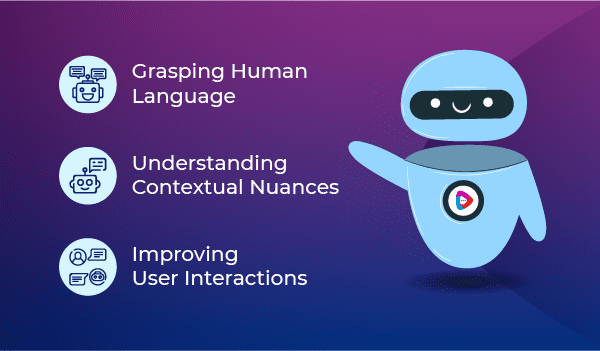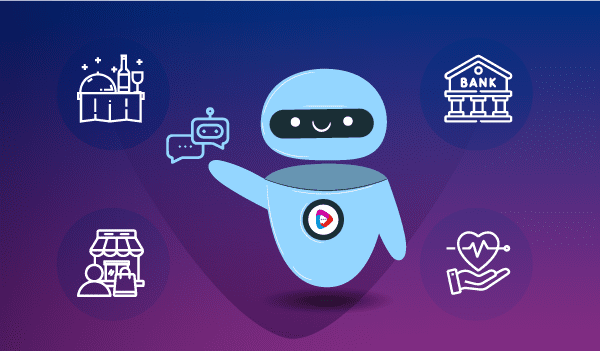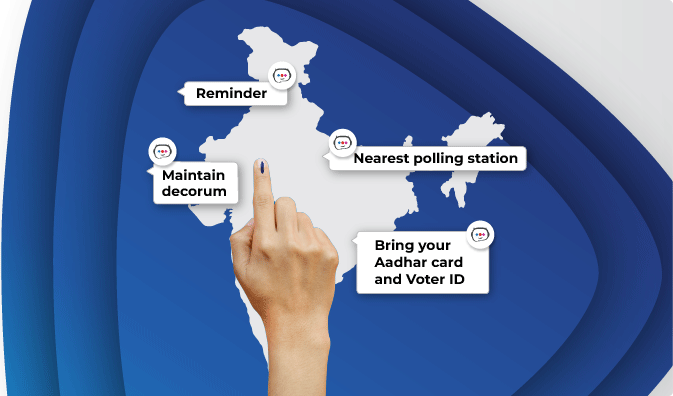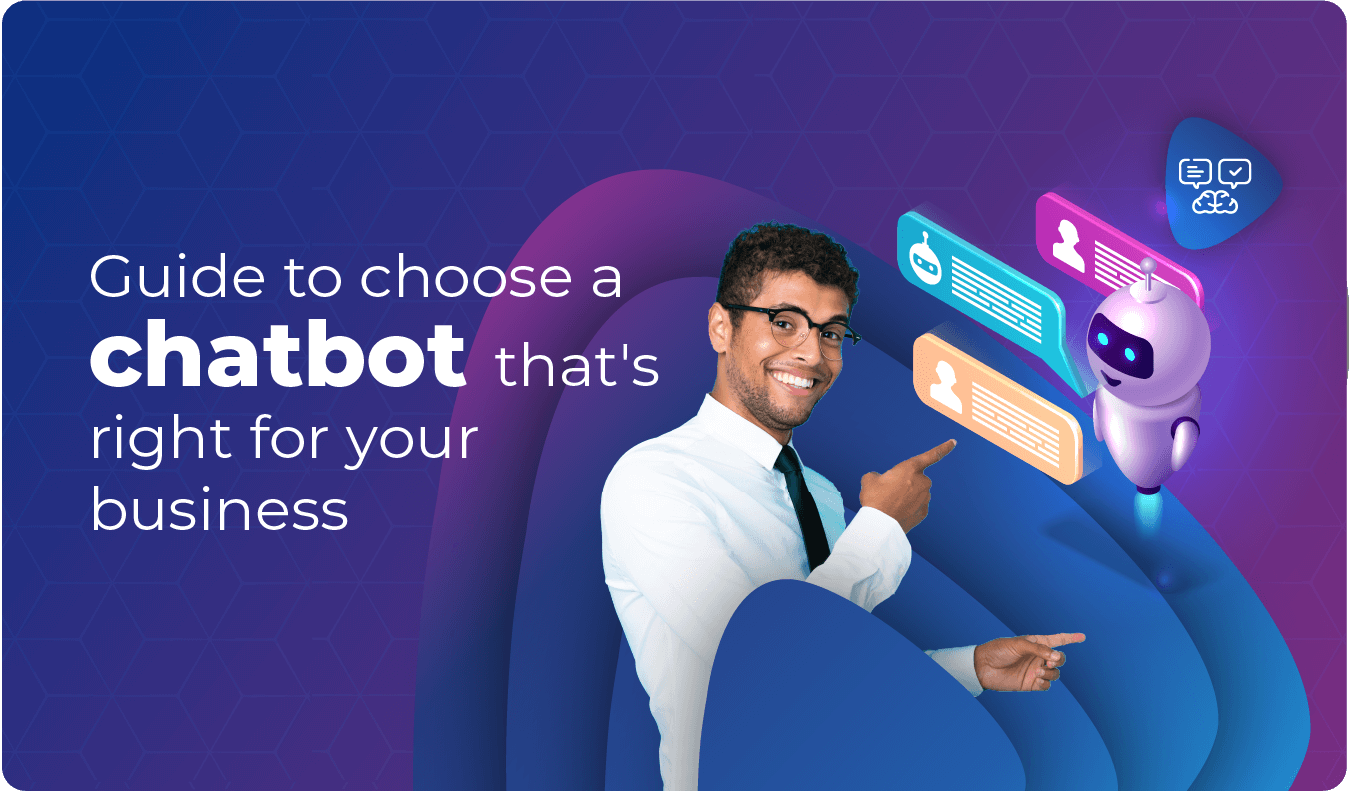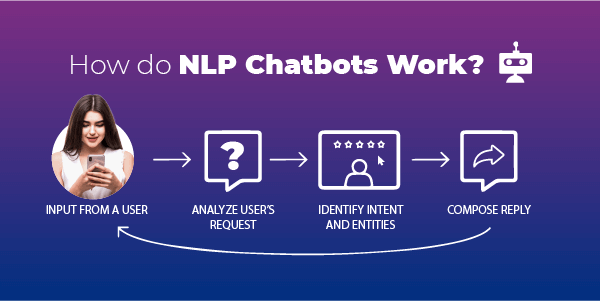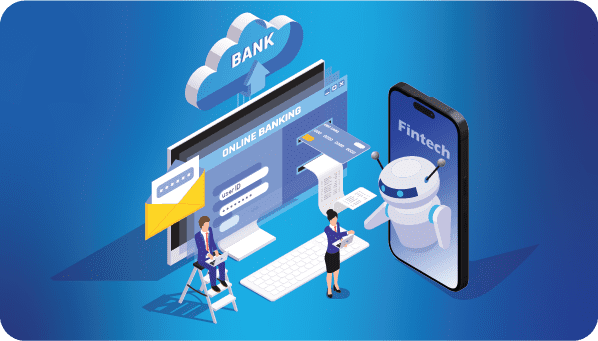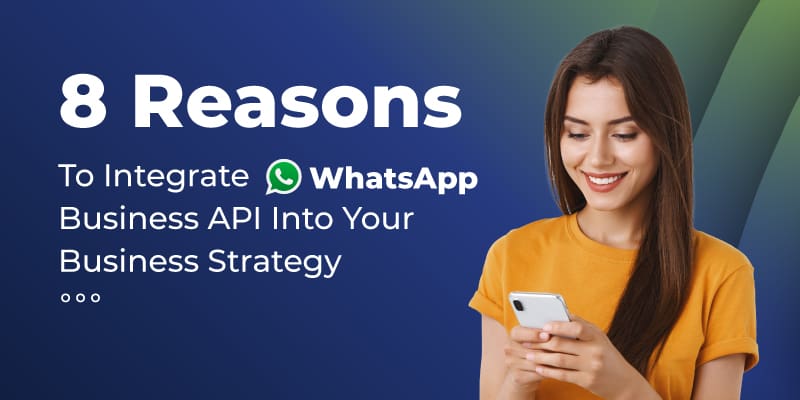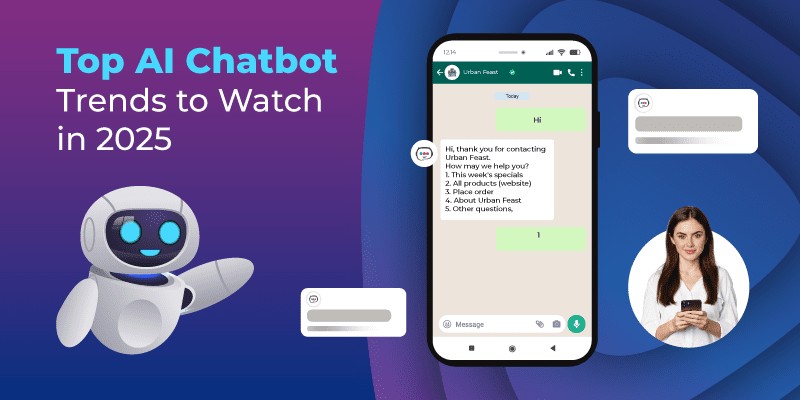Summary:
The rapid advancement of technology has transformed chatbots from mere scripted responders to sophisticated AI entities that can learn, adapt, and evolve. Equipped with Natural Language Processing (NLP), Machine Learning (ML), and sometimes even elements of Emotional Intelligence (EI), these AI chatbots have become invaluable tools for businesses and users alike.
But why does this matter? Let’s delve into the heart of artificial intelligence in chatbots and explore how NLP and ML revolutionise our interactions with technology.
NLP: The Foundation of Intelligent Conversations
NLP is the foundational technology behind AI chatbots, equipping them with the ability to grasp human language, decipher its subtleties, and deliver fitting responses. This field has evolved significantly, shifting from mere keyword detection to comprehending complex sentence structures and contextual meanings. NLP algorithms are trained to identify specific language patterns indicative of various emotions. Additionally, chatbots learn from extensive data containing emotional cues from conversations.
Grasping Human Language:
The primary function of NLP within chatbots is to facilitate an understanding of the complexities inherent in human language. This allows chatbots to not only grasp the literal meaning of words and phrases but also interpret the intended message of entire sentences, thereby fostering more natural and intuitive user interactions.
Understanding Contextual Nuances
Thanks to NLP, chatbots can recognize the fine distinctions in language, tone, and implied meanings, which empowers them to generate more precise and contextually appropriate replies.
Improving User Interactions
Utilizing NLP, chatbots can provide interactions that are not only personalized but also empathetic, significantly enhancing user engagement. Whether it’s handling inquiries, suggesting products, or offering assistance, chatbots powered by NLP can connect with users in a more impactful and efficient way.
Also Read: Guide to choosing a chatbot that’s right for your business.
ML: Evolving Intelligence for Enhanced Conversations
While Natural Language Processing (NLP) gives chatbots the capability to grasp and make sense of human language, it’s Machine Learning (ML) that acts as the central intelligence system, giving them the ability to evolve from interactions and enhance their responses progressively.
Learning from Interactions
Every exchange with a user is an opportunity for ML-driven chatbots to grow smarter. After each conversation, they become increasingly sophisticated and user-friendly by analyzing conversation data, recognizing patterns, and modifying their responses.
Personalizing Interactions
Machine Learning enables chatbots to craft interactions specifically aligned with individual user preferences, behaviors, and past interactions. This ensures a uniquely personalized experience for each user, from bespoke product suggestions to customized content and precisely targeted marketing communications.
Boosting Efficiency in Operations
ML-powered chatbots are not just about improving conversations; they’re also pivotal in optimizing business operations. They can automate routine tasks, streamline processes, and enhance efficiency by learning and adapting in real-time. This not only conserves time and resources but also empowers businesses to allocate more focus towards strategic goals.
Service Industry Use Case Examples of AI Chatbots
Hospitality and Travel Assistance:
In the hospitality and travel industry, AI chatbots can assist in addressing customer inquiries. NLP enables chatbots to understand travel-related queries and preferences, while ML helps them personalize recommendations based on past travel history and trends.
Learn how seamless salon services can be provided through an AI chatbot flow in this video.
Retail Customer Support:
In the retail sector, AI chatbots can assist customers with product inquiries, order tracking, returns and exchanges and provide personalized product recommendations.
Banking and Financial Services:
NLP enables chatbots to understand financial terminology and customer queries, while ML helps them detect fraudulent activities, analyze spending patterns, and provide personalized financial recommendations.
Healthcare Appointment Scheduling:
In the healthcare industry, AI chatbots can assist patients with appointment scheduling, prescription refills, telemedicine consultations, and provide general health information.
These service industry-based use case examples demonstrate how AI chatbots powered by NLP and ML are transforming customer interactions, streamlining operations, and enhancing user experiences in various sectors.
Conclusion
The evolution of AI chatbots, driven by advancements in NLP and ML, marks a significant technological leap. For businesses, these intelligent chatbots offer a way to enhance customer experience, improve operational efficiency, and drive growth. For users, they provide quick, accurate, and empathetic responses, making interactions with technology more natural and intuitive than ever before.
As we continue to push the boundaries of artificial intelligence, there is potential for chatbots to transform industries, redefine customer engagement, and revolutionize the way we interact. For more information, visit our website, or if you need help with Chatbot integration, connect with us.

